Bowery to Broadway
Cast & Crew
Charles Lamont
Maria Montez
Susanna Foster
Jack Oakie
Turhan Bey
Louise Allbritton
Film Details
Technical Specs

Synopsis
Irish Americans Michael O'Rourke and Dennis Dugan run rival Bowery beer gardens in turn-of-the-century New York. After Michael steals Bonnie Latour, Dennis' headline act, and puts her in his Crystal Palace show, Dennis tries to repossess Bonnie's wardrobe from off her back. He is soon arrested, but is bailed out by Michael. Later, Tammany Hall political Tom Harvey comes down to the Bowery with Lillian Russell, the musical comedy star. When she goes into the Crystal Palace, Dennis tricks Michael into insulting the performer by asking her to sing. In turn, she goes into Dennis' Shamrock Gardens and readily volunteers to perform her signature song, "Under the Bamboo Tree." With Harvey's help, Dennis opens up a theater on 14th Street, but not to be outdone, Michael opens his own theater down the block. While Dennis' shows struggle at the box office, Michael attracts large crowds by stealing his rival's ideas and improving on them. One day, however, Dennis spies Peggy Fleming's beautiful legs in a window of Madame Alda's boardinghouse and offers to make her a Broadway star. Though she initially rejects show business as a career, Peggy quickly changes her mind when she meets and falls in love with Ted Barrie, the show's songwriter. The Girl with Million Dollar Legs is a great success, and Peggy becomes the toast of New York. Upset by the attention paid to Peggy by Harvey, a jealous Ted breaks off their relationship, even though she is only seen with the politician for publicity reasons. That night, an upset Peggy is nearly killed when she falls off the stage into the orchestra pit. The two lovers are then reunited, but because of Peggy's severe injuries, Dennis is forced to close the show. In fact, the producer considers quitting until Michael tells him that he is thinking of opening up a theater in the Broadway district, once he raises the money. Father Kelly then convinces the two producers to pool their resources and become partners. Their first show together faces its first trial when Walter Rogers, the director, insists that husband-and-wife dance team Joe and Bessie Kirby, who have been with Dennis since his Bowery days, be replaced. The two overhear Rogers' edict, quit the show and open a dancing school. Years later, Dennis and Michael are great successes and are able to sign European star Marina to headline their new show. Though her first Broadway musical is a hit, Dennis next insists on producing a drama starring her, thus causing a break in his partnership with Michael. When Marina learns that Dennis has lost all his money producing a series of flops for her, she leaves him. Michael, too, has had little success on his own, so the two decide to go back to their roots and put on a musical revue featuring the Kirbys' teenage daughter, Bessie Jo. The show is a triumph, and Dennis and Marina are reunited when Michael informs his partner that she was the financial backer of the show.

Director
Charles Lamont
Cast

Maria Montez
Susanna Foster

Jack Oakie

Turhan Bey

Louise Allbritton
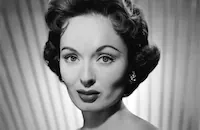
Ann Blyth

Donald Cook
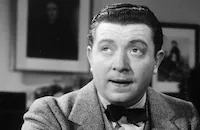
Frank Mchugh

Rosemary Decamp

Leo Carrillo
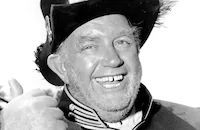
Andy Devine
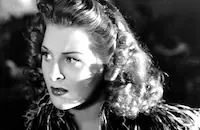
Evelyn Ankers

Thomas Gomez

Richard Lane
George Dolenz

Mantan Moreland
Ben Carter

Maude Eburne
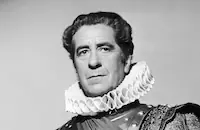
Robert Warwick
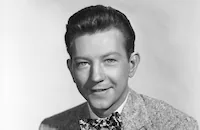
Donald O'connor

Peggy Ryan
Joe Mole
The Rainbow Four

George Meeker

Emmett Vogan
Harry Bradley
Billy Newell

Howard Mitchell
John Elliott

Clyde Fillmore
Jimmy Kelly
Tim Taylor
Terry Adams
Karen Raven
Katherine York
Robert Homans

Ralph Dunn
Harry Strang
Eddie Dunn
Charles Mcavoy
Harold Degarro
Beverlee Mitchell
Buz Buckley
Teddy Infuhr
Ronnie Rondell
Milton Kibbee
Donald Kerr
Virginia Brissac
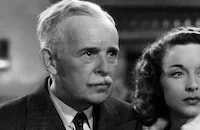
Howard Hickman
Walter Tetley
Jerry Shane
Mary Eleanor Donahue
Frank Darien
Marguerita Padula
Roy Butler
Jack Rice
Nelson Mcdowell
Jimmy Lucas
Walter Clinton
John Pearson
Crew
John Boyle
Bernard B. Brown
Hughie Cannon
Charles Carroll
Everett Carter
Will D. Cobb
Robert Cole
Edward Colebrook
Dorothy Compton
Mann Curtis
Harry Dacre
Louis Dapron
Milton Feld
John H. Flynn
Dave Franklin
Kim Gannon
Russell A. Gausman
Don George
John B. Goodman
Jerome Gottler
John Grant
Mort Greene
Arthur Hilton
Arthur T. Horman
J. Rosamond Johnson
Edmund Joseph
Edmund Joseph
Walter Kent
Lackritz
Bart Lytton
Bart Lytton
Judy Matson
Martin Obzina
Jack Pierce
John Queen
Carlos Romero
Harold I. Smith
Andrew B. Sterling
Lee Sweetland
Harry Von Tilzer
Doreen Triton
Charles Van Enger
Ted Von Hemert
Edward Ward
Edward Ward
Vera West
Edwin L. Wetzel
Mack Wright

Film Details
Technical Specs

Articles
Peggy Ryan (1924-2004)
Born Margaret O'Rene Ryan on August 28, 1924, in Long Beach, California, Ryan began dancing professionally as a toddler in her parents' vaudeville act, the Dancing Ryans, and was discovered by George Murphy when she was 12. Murphy arranged for young Peggy to dance with him in the Universal musical Top of the Town (1937). She would go on to make a few more film appearances over the next few years - the most striking of which as a starving, homeless girl in John Ford's The Grapes of Wrath (1940) - yet for the most part, she was hardly noticeable apart from a few dance numbers.
Her luck changed when Universal cast her opposite another teenage hoofer, Donald O'Connor in What's Cookin'? (1942). From then on, they teamed in a series of innocuous musicals that were low on production values, but high on youthful pluck. Just check out some of their titles: Private Buckaroo, Give Out, Sisters!, Get Hep to Love (all 1942); Top Man, Mr. Big (both 1943); Chip Off the Old Block, This Is the Life, and Bowery to Broadway (all 1944). They may have not been high art, but jitterbuggin' kids loved it, and given the low investment Universal put into these pictures, they turned quite the profit.
Her career slowed down after the war. In 1945, she married songwriter James Cross, and didn't return to films until 1949, when she made two minor musicals that year: Shamrock Hill, There's a Girl in My Heart. She divorced Cross in 1952 and met her second husband, dancer Ray McDonald, in her final film appearance, a forgettable musical with Mickey Rooney, All Ashore (1953). Tragically, McDonald died in 1957 after a food choking incident, and the following year, Ryan moved to Honolulu after marrying her third husband, Honolulu Advertiser columnist Eddie Sherman. She kept herself busy teaching dance classes at the University of Hawaii, but in 1969, she found herself back in front of the camera as Jenny Sherman, secretary to Detective Steve McGarrett (Jack Lord) on the long-running show Hawaii Five-O,. She played the role for seven years, remaining until 1976.
Eventually, Ryan relocated with her husband to Las Vegas, where for the last few years, she was teaching tap dancing to a whole new generation of hoofers. She is survived by her son, Shawn; daughter Kerry; and five grandchildren.
by Michael T. Toole

Peggy Ryan (1924-2004)
Donald O'Connor, 1925-2003
Born Donald David Dixon O' Connor in Chicago on August 28, 1925, he was raised in an atmosphere of show business. His parents were circus trapeze artists and later vaudeville entertainers, and as soon as young Donald was old enough to walk, he was performing in a variety of dance and stunt routines all across the country. Discovered by a film scout at age 11, he made his film debut with two of his brothers in Melody for Two (1937), and was singled out for a contract by Paramount Pictures. He co-starred with Bing Crosby and Fred MacMurray in Sing, You Sinners (1938) and played juvenile roles in several films, including Huckleberry Finn in Tom Sawyer - Detective (1938) and the title character as a child in Beau Geste (1939).
As O'Connor grew into adolescence, he fared pretty well as a youthful hoofer, dancing up a storm in a string of low-budget, but engaging musicals for Universal Studios (often teamed with the equally vigorous Peggy Ryan) during World War II. Titles like What's Cookin', Get Hep to Love (both 1942), Chip Off the Old Block and Strictly in the Groove (both 1943) made for some fairly innocuous entertainment, but they went a long way in displaying O'Connor's athletic dancing and boyish charm. As an adult, O'Connor struck paydirt again when he starred opposite a talking mule (with a voice supplied by Chill Wills) in the enormously popular Francis (1949). The story about an Army private who discovers that only he can communicate with a talking army mule, proved to be a very profitable hit with kids, and Universal went on to star him in several sequels.
Yet if O'Connor had to stake his claim to cinematic greatness, it would unquestionably be his daringly acrobatic, brazenly funny turn as Cosmo Brown, Gene Kelly's sidekick in the brilliant Singin' in the Rain (1952). Although his self-choreographed routine of "Make "Em Laugh" (which includes a mind-bending series of backflips off the walls) is often singled out as the highlight, in truth, his whole performance is one of the highlights of the film. His deft comic delivery of one-liners, crazy facial expressions (just watch him lampoon the diction teacher in the glorious "Moses Supposes" bit) and exhilarating dance moves (the opening "Fit As a Fiddle" number with Kelly to name just one) throughout the film are just sheer film treats in any critic's book.
After the success of Singin' in the Rain, O'Connor proved that he had enough charisma to command his first starring vehicle, opposite Debbie Reynolds, in the cute musical I Love Melvin (1953). He also found good parts in Call Me Madam (1953), There's No Business Like Show Business (1954), and Anything Goes (1956). Unfortunately, his one attempt at a strong dramatic role, the lead in the weak biopic The Buster Keaton Story (1957) proved to be misstep, and he was panned by the critics.
By the '60s, the popularity of musicals had faded, and O'Connor spent the next several years supporting himself with many dinner theater and nightclub appearances; but just when it looked like we wouldn't see O'Connor's talent shine again on the small or big screen, he found himself in demand at the dawn of the '90s in a string of TV appearances: Murder She Wrote, Tales From the Crypt, Fraser, The Nanny; and movies: Robin Williams' toy-manufacturer father in Toys (1992), a fellow passenger in the Lemmon-Matthau comedy, Out to Sea (1997), that were as welcoming as they were heartening. Survivors include his wife, Gloria; four children, Alicia, Donna, Fred and Kevin; and four grandchildren.
by Michael T. Toole
Donald O'Connor, 1925-2003
Quotes
Trivia
Notes
The working title of this film was Hip Hip Hooray. Prior to principal photography, Charles Lamont replaced Arthur Lubin as director, according to a March 1944 Hollywood Reporter news item. A late May 1944 Hollywood Reporter news item announced that "old timers" Max Davidson and Frank Pharr had been signed to play real-life vaudevillians Weber and Fields, but those roles were not included in the final film. The same item listed Wilbur Mack and Snub Pollard as cast members, but they were not seen in the incomplete print viewed and their appearance in the released film has not been confirmed. Three musical numbers were planned and perhaps shot, but were not used in the completed picture, including "Bolero," "Nora Malone" and "Annie Rooney."














